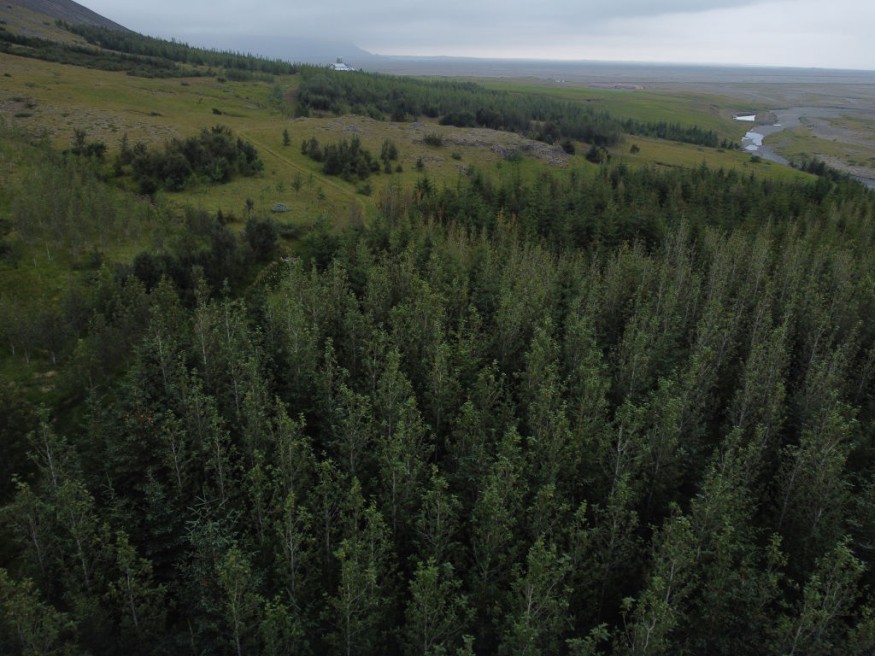Researchers from Virginia Tech and the Pacific Northwest National Laboratory determined that crucial sections of the global carbon cycle used to track carbon dioxide transportation in the environment are incorrect, which could dramatically change traditional carbon cycle models.

Monitoring Changes

The ability to effectively monitor and anticipate the number of climate-changing gases in the atmosphere requires an estimate of how much carbon dioxide plants remove from the atmosphere. This discovery can alter climate change estimates, while it is unknown if the discrepancy will result in more or less carbon dioxide being accounted for in the environment at this time.
"Either the amount of carbon coming out of the atmosphere from the plants is wrong, or the amount coming out of the soil is wrong," said Meredith Steele, an assistant professor in the College of Agriculture and Life Sciences School of Plant and Environmental Sciences, whose Ph.D. student at the time, Jinshi Jian, led the research team. The findings will be published in Nature Communications on Friday.
Jian and Steele's research focuses on carbon cycling, which is the process through which plants and soil remove and return carbon dioxide to the atmosphere.
Vital Monitoring

It's crucial to know where all of the carbon will comprehend how it impacts Earth's ecosystems. Carbon accounting determines how much carbon is traveling where and how much is in each of the Earth's carbon pools, including the seas, atmosphere, land, and living things.
Researchers have been attempting to create a precise picture of where our carbon is and where it is going. Researchers from Virginia Tech and the Pacific Northwest National Laboratory focused on the carbon dioxide plants remove from the atmosphere through photosynthesis.
Carbon
Carbon is released into the terrestrial biosphere when animals eat plants. It then finds its way into the soil or the bodies of animals. Furthermore, a significant quantity of carbon is exhaled - or respired - back into the environment.
This carbon dioxide is necessary for balancing the quantity of carbon in the atmosphere, which contributes to climate change, and for long-term carbon storage.
However, when utilizing the established figures for soil respiration, Virginia Tech researchers noticed that the number in the carbon cycling models is no longer balanced.
Carbon Cycle
The carbon cycle's driving forces are photosynthesis and respiration. Still, the total annual sum of each of these at the global scale has eluded measurement, according to Lisa Welp, an associate professor of Earth, atmospheric, and planetary sciences at Purdue University who is familiar with the work but was not involved in it. The authors' attempts to reconcile these global estimates from various groups reveal that they are not self-consistent and that there is still much more to learn about the planet's core processes.
What Jian and Steele discovered, along with the rest of the team, is that using the accepted number of 120 petagrams for carbon dioxide gross primary productivity (each petagram equals a billion metric tons), the amount of carbon released through soil respiration should be in the neighborhood of 65 petagrams.
The researchers discovered that the amount of carbon exchanged between Earth's carbon pools of the oceans, atmosphere, land, and living things are about 95 petagrams by analyzing multiple fluxes, or the amount of carbon exchanged between Earth's carbon pools of the oceans, atmosphere, land, and living things.
Gross primary production should be in the range of 147. To put things in perspective, the gap between the commonly recognized quantity of 120 petagrams and this estimate is roughly three times global fossil fuel emissions.
There are two options, according to the experts. The first is that remote sensing may underestimate gross primary output. The other is upscaling soil respiration readings, which might result in an overestimation of carbon returned to the atmosphere. The next step, according to Steele, is to determine if this misunderstanding is a good or negative factor in the scientifically proved threat of climate change.
Next Step
The next step of the research is to figure out which parts of the global carbon cycle model are underestimated or exaggerated.
Better predictions and models will be possible to accurately judge these ecosystems' response to climate change if carbon is accurately accounted for and where it is in the ecosystem, according to Jian, who began this research as a Ph.D. student at Virginia Tech and is now at Northwest A&F University in China.
"The climate has changed since we were kids," Jian added. "With more extreme weather events, our work should improve the carbon cycle models we employ and offer better projections of the future climate."
A portion of Steele's startup cash went to Jian's graduate research as Steele's first Ph.D. student at Virginia Tech. Jian, interested in data science, databases, and soil respiration, was working on a different section of his dissertation when he came across something that didn't match up.
Jian was looking for ways to get tiny, localized carbon readings worldwide. Jian observed when investigating this that the best estimations didn't line up when all of the worldwide carbon accounting fluxes were combined.
Read also: Gloom Reality: Even the Most Daring Technologies Can No Longer Reverse Impacts of Climate Change
For similar news, don't forget to follow Nature World News!
© 2025 NatureWorldNews.com All rights reserved. Do not reproduce without permission.





